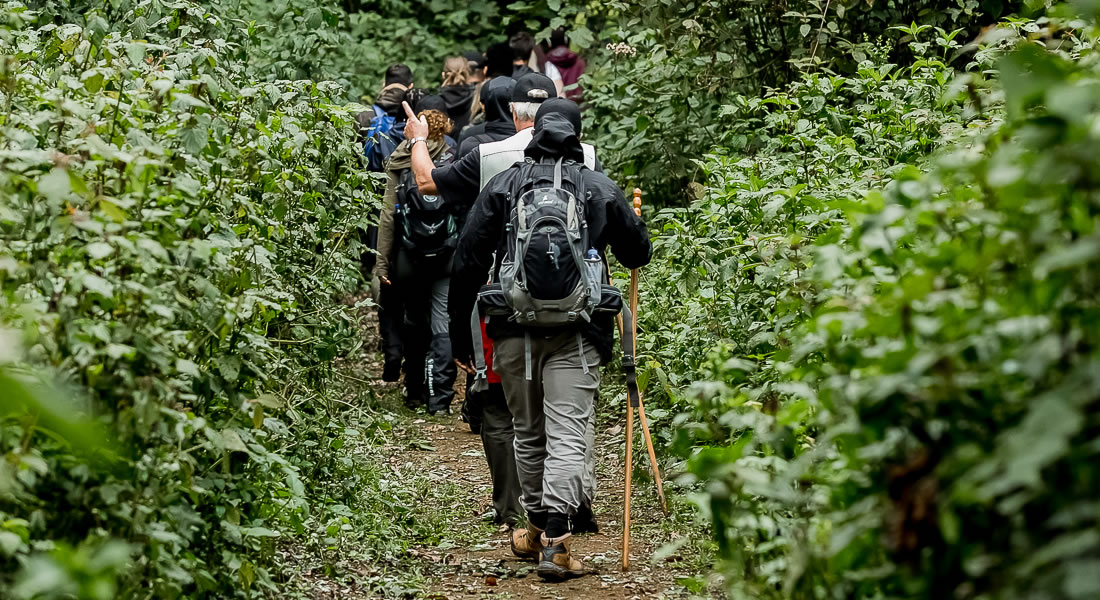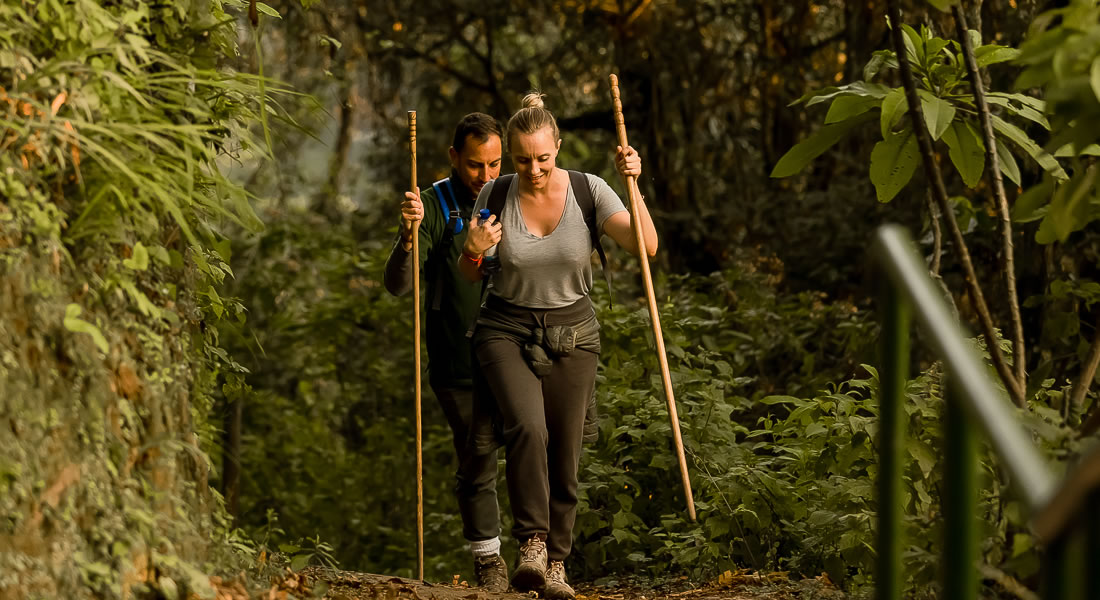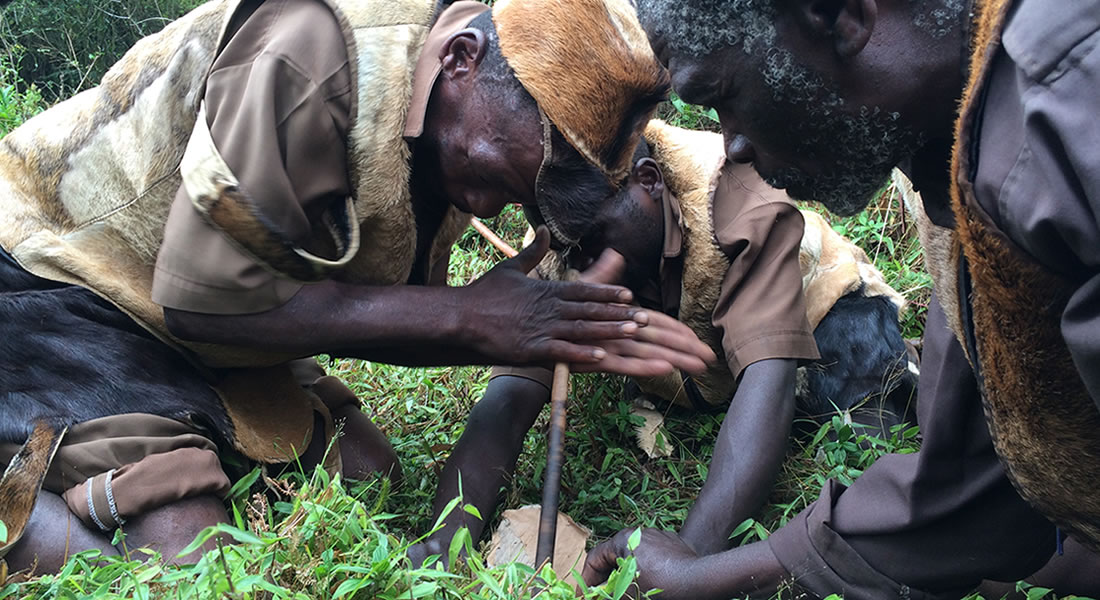Rwanda Gorilla Trekking is undoubtedly one of the most popular vacation activities in Africa since…

Uganda, a small, blessed country in East Africa that straddles the equator, is landlocked but full of amazing sights to see. Guided Nature Walks in Uganda will give you the best view of its vegetation and animal life; guided nature walks are available in almost all of the country’s 10 conservation areas, bringing you up close to wildlife. Other reserve centres can also be arranged within Uganda. The country is known as the Pearl of Africa due to its exceptional scenery and lush environment; it is situated on a plateau bordered by mountains and the Rift Valley. Rwanda, Tanzania, Democratic Republic of Congo, and South Sudan are some of Uganda’s neighbours. Equatorial climates dominate the nation; vegetation is most abundant in the southwestern region, gradually decreasing in the central region, and sparse in the northern region, bordering on semi-desert areas.
Nature Walks in Bwindi Impenetrable National Park

Guided nature walks in Uganda’s most popular national park, Bwindi Impenetrable National Park, which is located in the southwest of the country and is home to half of the world’s remaining mountain gorilla population (Gorilla beringei); the other gorilla populations are found in the Virunga volcanic regions that stretch to Rwanda. Bwindi is divided into four sectors: Buhoma, Ruhija, Nkuringo, and Rushaga. Each of these sectors has habituated gorilla families, but there are opportunities to go on guided nature walks in each of these four sectors. An armed game ranger with experience from the Uganda Wildlife Authority leads the way. The adventure starts with a morning briefing at the park headquarters and continues through the forest along established pathways. Walking sticks provided at the tourist centre are free for walkers as long as they are returned.
The Buhoma sector boasts six major nature walk trails: the Muyanga waterfall walk, the Rushura hill walk, which, on a clear day, offers clear views of the great Virunga mountains and the backdrop of the Rwenzori mountain together with Lake Edward and George; the Muzubijiro trail, which offers encounters with several primate and bird species; and the Ivi river walk, which passes through a location home to giant forest pigs. This hike takes about seven hours to complete. The Buhoma-Nkuringo route descends to the Nkuringo part of the park, providing stunning vistas of the settlements it passes through. The Habinyanja path is a popular route for bird viewing trips since it offers excellent views.
The Uganda Wildlife Authority’s experienced range guide will take you on a walk in the park area starting at 8:00 am as part of the Rushaga sector tours. It is possible to spot creatures like mountain duikers and forest elephants. Nature walks in Bwindi are accompanied by activities like gorilla tracking, bird watching, mountain biking, and the Batwa cultural experience. The ranger is always very knowledgeable as you pass through different vegetative zones, identify caves that used to be homes to the early forest dwellers (pygmies), name gorilla food, and a refreshing waterfall called the “Bagyenda” falls descending to the pickup point to the lodge.
Nature Walks in Murchison Falls National Park
Murchison Falls National Park is the oldest and largest conservation area in Uganda, spanning an area of approximately 3840 square kilometres. The park is named after the falls, which is a major attraction there. However, during the reign of Idi Amin, the park was known as Kabalega until his downfall, at which point it was renamed Murchison Falls National Park. The park was designated as a national park to protect species of animals and birds that are associated with Murchison. Most Uganda Safaris and Wildlife Tours usually include a visit to this park.
Starting early in the morning, nature walks wind through the well-maintained paths of the Kanio Paidi and Rabongo forests. These are usually explored on foot, and while you’re there, keep an eye out for primates like chimpanzees and olive baboons. Strolling along the marshy, swampy area of the Nile delta may reward you with breathtaking views of the shoe bill stork, as well as the sound of the mighty fall and lovely singing birds. An added bonus is seeing Jackson hartebeests and other antelopes.
Hikes to the top of the falls are quite exciting because they start with a boat ride and end at the baker’s point, where you can walk for about 45 minutes to reach the top. There are breathtaking views of the Nile, the main fall, and the surrounding area, but this particular walk may need some physical fitness because it goes uphill. The refreshing air and breathtaking views of the Nile await you when you reach the summit.
Nature Walks in Queen Elizabeth National Park.
Queen Elizabeth National Park is the second largest among Uganda National Parks and is located in the western region of the country, boasting of an abundance of animal, tree, and plant species, including the renowned tree-climbing lions. Over 600 different species of birds have been identified here, making it home to the greatest concentration of birds in all of East Africa, some of which are endemic to the area. The Kyambura Gorge, Maramagambo Forest, Mweya Peninsula, and the Ishasha River Trail are among the park’s top natural walking routes.
One of the best locations for nature walks in Queen Elizabeth National Park is the Maramagambo Forest. The forest is home to primates such as the black and white colobus monkey, red-tailed monkey, chimpanzee, and blue monkeys. It is also a great place to go on birding safaris, with common species to see being the African fish eagle, lesser and greater flamingos, and Rwenzori turaco.
The Mweya peninsula, which faces Lake Albert in the northeastern section of the park, is known for its dense vegetation. Guided nature walks in the area are primarily conducted to track mongooses and offer breathtaking views of the lake and the Rwenzori mountain in the background. During a nature walk, it’s possible to spot aquatic animals like hippos, ducks, and elephants. Queen Elizabeth National Park boasts roughly 72 dotting craters that were produced during the age of volcanic activity. Guided Nature Walks in Uganda near the volcanoes are quite lovely.
Along the river Ishasha towards the south, nature walks will reward you with excellent views of hippos, buffaloes, and water birds. The Kasenyi plains to the north of the park expose some of the wildlife in Queen Elizabeth National Park, including antelopes like the Uganda kobs, waterbucks, and bush bucks. These are led by an armed Uganda Wildlife Authority game ranger in case the animals fuss.
Nature walks at Mount Elgon National Park.
Located in eastern Uganda, tucked along Kenyan borders, this mountain boasts the largest foot base in the world, where Bantu and Kalenjin settlers live. It is an active volcano with a large caldera, and its highest peak, Wagagai, is named after the mountain’s native Masaba. Starting at the Kapkwai Exploration Centre, nature walks here offer fantastic views of small forest monkeys, birds of various species, and numerous plant species, to name a few.
Trails pass by caves and waterfalls; the 7-hour trek from the Kapkwai centre winds through a forest of tropical bamboo; the 5-kilometer track leads to Chebonet, where you can enjoy breathtaking views of the waterfalls; and treks through the forest can endure for three or more hours.
Nature Walks in Lake Mburo National Park
The park nearest to Kampala, the country’s capital, is Lake Mburo National Park, one of Uganda’s smaller national parks. Water bodies make up the majority of the park, including the lake after which it is named. There is a well-maintained network of trails for nature walks, which begin early in the morning to provide stunning views of the serene lakes. Along the way, you will come across Rothschild’s giraffes, African buffaloes, zebras, elands, topi, waterbucks, impalas, and olive baboons.
When you visit Lake Mburo National Park, your guide will narrate you old tales about the park, such as the tale of the two brothers who formerly resided in the Mburo and Kigarama areas. It is thought that Kigarama dreamed that the floodwaters would take them away. He discussed this dream with Mburo, but the latter rejected it. Eventually, Kigarama’s dream came true, but he had moved upward and abandoned the brother; the floods took him away along with the crops, giving rise to the current name, MBURO.
Because there are a few predators like lions and leopards in Lake Mburo National place, which primarily appear at night and rarely arrive during the day, the place is perfect for guided nature hikes. Two hours are spent on walks near water bodies and in forested regions. Because the animals are drawn to the salt, a guided trip to the Rwonyo salt lick will provide you with good views of the creatures.
Nature Walks in Mgahinga Gorilla National Park
The smallest national park in Uganda, Mgahinga, spans 33 square kilometres and is home to the Nyakagezi gorilla family. It is an extension of Rwanda’s great Virunga Mountains and contains two of the eight series of volcanic mountains. Guided Nature Walks in Uganda are available in the park. It is the only location in Uganda where you can discover golden monkeys wandering through a bamboo forest. You can also go through the Sabyinyo Gorge, see birds, and have a decent chance of seeing Rwenzori turacos. Hikes along the Congo border provide stunning views of Kisoro town and Lake Mutanda, as well as a variety of flora types. Other well-liked activities in the national park include bird viewing, gorilla trekking, and tracking golden monkeys. You may see the active and fascinating golden monkeys along the treks.
Nature Walks in Semuliki National Park
Semuliki National Park is a great spot for nature walks and to see a range of Congolese wildlife. The park is an extension of the Ituri forest in the Democratic Republic of the Congo and is well-known for its hot springs, which have drawn many tourists. The water is so hot that it can boil an egg and rises to a height of two metres, and the locals think the springs have medicinal properties. The park’s hikes trace the Kirumia route, which winds along the Semuliki River through the heart of the forest. For birdwatchers, the eight-hour hike is ideal. You may get to the hot springs directly from the Sempaya Trail.
To ensure successful Guided Nature Walks in Uganda, you should bring along long sleeve shirts and pants, waterproof boots, raincoats, hats, sunscreen, binoculars for birdwatching, pack packs, hand gloves and any other personal belongings. There are many parks where you can go on nature walks, including non-protected conservation areas. These are best visited in the dry seasons, from June to September and December to February, when the forest trails are less overgrown and easier to follow. The dry season is the greatest time to see the animals, although they may also be seen from a distance without much effort. The nation is straddled along the equator, with an equatorial environment that is quite favourable throughout the year. As a result, the park is open for visits year-round, even during the rainy seasons.
In order to observe more of what you might not have noticed during the Guided Nature Walks in Uganda, nature walks can be coupled with other activities including game drives, boat cruises, chimpanzee tracking, rhino tracking, experience lion tracking, birding safaris, and mountain climbing. The greatest lodging options are found in the park regions; they cater to all price ranges and are ideal for luxury, midrange, and budget travellers.



